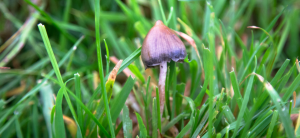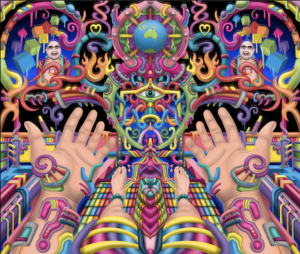The Evolving Medical Power of Psychedelics
Written by: Marko Ilic
Psychedelic drugs have recently risen to increased prominence in the medicinal world, and many stigmas that enveloped the various drugs – MDMA, Psilocybin, LSD, Ketamine – have weakened due to surges in mental health crises and a growing void in solutions to combat them. A 30% rise in suicide rates since 2000 coupled with exponentially rising drug overdoses, namely due to synthetic opiates such as Fentanyl, has forced medical professionals to seek mental health therapy differently, leading to the re-introduction of psychedelics in psychiatry. A positive re-evaluation for these drugs through the lense of lawmakers and the public can be ignited through encouraging clinical trials, further research, and social de-stigmatization – leading to eventual legal use throughout the medical world against various mental illnesses.
History
In the 1950s, numerous psychedelic drugs such as LSD and Mescaline, the latter being a derived substance of the San Pedro Cactus, began to be used in trials aimed at treating alcoholism and schizophrenia. Early studies indicated it to be largely effective, showing effective results in mitigating alcohol addiction. Researchers like Stanislov Grof, a renowned Czech Psychiatrist, popularized the study and use of LSD, preferring it to the common mental therapy methods of the 1950s such as electroshock and artificial fever therapies. Grof was quoted by NPR’s Arun Rath: “This was a tremendous deepening and acceleration of the psychotherapeutic process, and compared with the therapy in general, which mostly focuses on suppression of symptoms, here we had something that could actually get to the core of the problems.” Despite promising results throughout psychedelic therapy, the drugs became synonymous with the Hippie and Anti-War movement, becoming commonplace in recreational drug circles. In 1970, Richard Nixon’s Controlled Substance Act passed, which effectively outlawed LSD and other similar hallucinogens as Schedule 1 drugs, destroying the momentum and future study of these compounds as therapy mechanisms.
Re-Introduction and Therapeutic Promise
With the destructive effects of the opiate crisis and Covid-19 exacerbating burnout, depression, PTSD, and overall stress levels, many medical professionals are seeking new therapeutic outlets. Psychedelic drugs such as Psilocybin and MDMA increase levels of serotonin, a neurotransmitter which increases happiness and stabilizes mood. A large majority of people with depression have been correlated to have a serotonin deficiency within the brain. Different chemicals produced by these drugs, for example oxytocin, sends feelings of intense love, sedating users in a medical setting which allows them to open up about past experiences. MDMA, which produces large amounts of both chemicals, has specifically been used in therapy centers as a PTSD “miracle drug”, with 107 patients used as subjects in clinical trials held by the Multidisciplinary Association for Psychedelic Studies. The subjects underwent MDMA therapy sessions with regulated dosages and in a safe environment. After a year, over 68% of patients did not meet the requirements for a PTSD diagnosis. Due to its tendency to make users feel open, unafraid, and euphoric, MDMA could especially be utilized against PTSD, which as a therapy field has had little success in remedying the chronic symptoms experienced by people, namely trauma-victims and military veterans.
Psilocybin, the psychoactive ingredient in Magic Mushrooms – a group of fungi which host hallucinogenic properties – has been largely used in research for depression. While the inner workings of a psychedelic mushroom experience can be hard to articulate, patients most clearly align it with “soul-searching,” since the brief trips can take users down long paths of self-reflection and personal understanding. The sessions are followed up with reflections with psychiatrists which are focused on understanding the root of the patient’s issues. The entire approach is predicated on understanding a patient’s personal woes and finding the internal remedies to that problem, by using intense trips to understand a person’s psyche and thought process. A study led by the Centre for Psychedelic Research at the Imperial College in London showed that a 6-week trial between Lexapro – a commonly prescribed antidepressant – and Psilocybin, showed little difference in their impact on treating depression. While both compounds are shown to have benefits, Psilocybin therapy is not repetitive nor does it have any damaging side effects in a safe setting. Lexapro needs to be taken every day and can have negative effects such as weight changes and severe withdrawal episodes. The advantages offered by psychedelics against prescribed medications, many which are expensive, repeating, and potentially harmful, is something to consider in therapy despite the social taboo In spite of the fact that research in psychedelic therapy is promising, it is largely preliminary and needs more legal advocation to see mainstream implications throughout the medical world.
Figure 1

Liberty Cap Mushroom which contains Psilocybin
Source: Kevin Wells/Getty Images
Pathways to Widespread Psychedelic Therapy
Within the past 3 years, psychedelic drugs and consequentially, therapy methods, have been largely destigmatized and promoted by various lawmakers within the US. Denver became the first city in America to decriminalize Magic Mushrooms and their psychoactive compound, psilocybin. The act doesn’t allow for users to be prosecuted for obtaining and using the mushrooms, and several cities in California followed suit. As recent as June 2021 a bill in California is preparing to face further legal clearance, but early votes show promise in its ability to be passed. The bill would decriminalize a large number of psychedelic compounds isolated for their potential therapeutic effects, and it includes Magic mushrooms, psilocin, dimethyltryptamine (DMT), ibogaine, mescaline, LSD, and MDMA. If passed, the bill could lead to further legal clearance around the country and could spark the momentum needed to catapult psychedelic therapy into the conventional medical world. As a whole, the psychedelic realm has been largely damaged through repeated recreational abuse, but shifting the conversation about these drugs from recreational to medical use may be the necessary catalyst to extract their therapeutic properties.
Figure 2

A recreation of a DMT visual while hallucinating
Source: Cuppa Tea – Youtube
Conclusion
While psychedelic research and drugs were cut off due to their recreational abuse in the 1960s and 70s, the headway in its therapeutic properties have made in the 2010s make it a prime candidate to assert itself in the medical world as a legitimate remedy to increasing mental conditions such as PTSD and depression. The social taboo and stigma that shrouds these compounds has held them back from reaching their medical potential, but increased legal and social support has shifted the widespread negative perception of these drugs to something which can at the very least be mentioned as an outlet of mental support. Further research and trials which determine the effectiveness of various drugs against mental illnesses can legitimize them as tools for people suffering, and with social and legal support can open up the medical field’s arsenal and subsequent success in combating the exponential growth of mental illness.
References and Sources
Cohen, I. Marks, M. (2021, October 4). Psychedelic therapy: a roadmap for wider acceptance and utilization. Retrieved October 4, from https://www.nature.com/articles/s41591-021-01530-3
Costandi, M. (2014, September 2). A brief history of psychedelic therapy. Retrieved September 8, from https://www.theguardian.com/science/neurophilosophy/2014/sep/02/psychedelic-psychiatry
Goodwin, G. Carhart-Harris, R. (2017, May 17). The Therapeutic Potential of Psychedelic Drugs: Past, Present, and Future. Retrieved October 1, from https://www.ncbi.nlm.nih.gov/pmc/articles/PMC5603818/
Jaeger, K. (2021, September 6). Congressman Says He’ll Bring The Psychedelics Reform Movement To Capitol Hill ‘This Year’. Retrieved September 29, from https://www.marijuanamoment.net/congressman-says-hell-bring-the-psychedelics-reform-movement-to-capitol-hill-this-year/
Johnson, M. Yensen, R. Wood, E. Tupper, K. (2015, October 6). Psychedelic medicine: a re-emerging therapeutic paradigm. Retrieved October 10, from https://www.ncbi.nlm.nih.gov/pmc/articles/PMC4592297/
Tullis, P. (2021, January 27). How ecstasy and psilocybin are shaking up psychiatry. Retrieved October 5, from https://www.nature.com/articles/d41586-021-00187-9